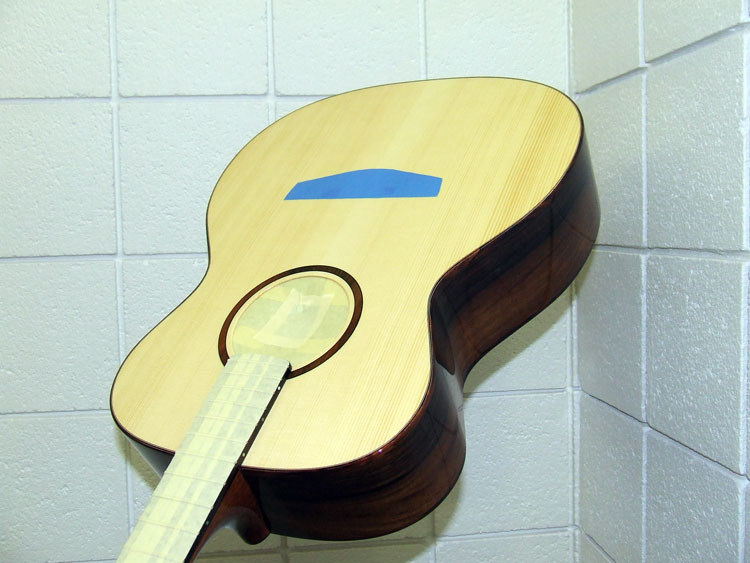I can only think of one good reason to glue a bridge on first .. that being, you can get ful wood to wood contact all round.
But the downside is nasty IMO - you are going to get a valley of finish next to the bridge, almost impossible to sand and buff. Ig the bridge EVER needs to come off, you are looking at some finsih damge for sure, and on a top, not where you want to have any if you can avoid it.
I used to chisel off the lacquer, but on the last guitar, I used the Nichols/John Hall die grinder router with an 1/8 inch bit to do it - it was amazing - no chipout of the top, no chipping of the lacquer edges, totally even route depth, easy to control. Simply put, I will never do it any other way - this way is just TOO easy.
BTW .. Hesh only has his bridge area masked off before sending to Tony F for finishing .. bridge goes on after buffing out, like the overwhelming majority here.
|


